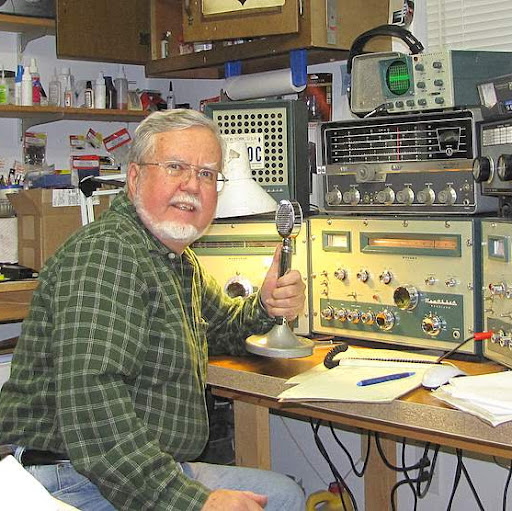Richard J Pettit
age ~83
from Twin Falls, ID
- Also known as:
-
- Richard Junius Pettit
- Richard Jpettit
Richard Pettit Phones & Addresses
- Twin Falls, ID
- Salt Lake City, UT
- 1025 Purple Sage Loop, Castle Rock, CO 80104 • 3039332042
- Littleton, CO
- Fort Collins, CO
- Hailey, ID
Resumes

Richard Pettit
view source
Richard Pettit
view source
Richard Pettit
view source
Richard Pettit
view source
Richard Pettit
view sourceLocation:
United States

Richard Pettit
view sourceLocation:
United States

President At Pettit Companies
view sourcePosition:
President at Pettit Companies
Location:
Gaithersburg, Maryland
Industry:
Commercial Real Estate
Work:
Pettit Companies - Gaithersburg, MD 20879 since Jan 1980
President
President
Education:
High Point University 1971 - 1975
BS, Business Administration
BS, Business Administration
Interests:
Golfing, Skiing, and having a good time.
Honor & Awards:
Past President of Maryland National Capital Building Industry Association
Past President of Suburban Maryland Building Industry Association
Past Board Member of the Montgomery County Hospice
Milton E. Kettler Award
Medicine Doctors

Richard J. Pettit
view sourceSpecialties:
General Surgery
Work:
Richmond Surgical
8921 3 Chopt Rd STE 300, Richmond, VA 23229
8042859416 (phone), 8042859461 (fax)
8921 3 Chopt Rd STE 300, Richmond, VA 23229
8042859416 (phone), 8042859461 (fax)
Education:
Medical School
Virginia Commonwealth University SOM
Graduated: 1978
Virginia Commonwealth University SOM
Graduated: 1978
Procedures:
Breast Reconstruction
Hernia Repair
Mastectomy
Proctosigmoidoscopy
Thyroid Gland Removal
Breast Biopsy
Endoscopic Retrograde Cholangiopancreatography (ERCP)
Gallbladder Removal
Laparoscopic Gallbladder Removal
Small Bowel Resection
Upper Gastrointestinal Endoscopy
Hernia Repair
Mastectomy
Proctosigmoidoscopy
Thyroid Gland Removal
Breast Biopsy
Endoscopic Retrograde Cholangiopancreatography (ERCP)
Gallbladder Removal
Laparoscopic Gallbladder Removal
Small Bowel Resection
Upper Gastrointestinal Endoscopy
Conditions:
Abdominal Hernia
Breast Disorders
Cholelethiasis or Cholecystitis
Inguinal Hernia
Malignant Neoplasm of Female Breast
Breast Disorders
Cholelethiasis or Cholecystitis
Inguinal Hernia
Malignant Neoplasm of Female Breast
Languages:
English
Spanish
Spanish
Description:
Dr. Pettit graduated from the Virginia Commonwealth University SOM in 1978. He works in Richmond, VA and specializes in General Surgery. Dr. Pettit is affiliated with Bon Secours St Marys Hospital and Henrico Doctors Hospital.
Isbn (Books And Publications)



Fodor's German for Travelers: Phrasebook Dictionary
view sourceAuthor
Richard Pettit
ISBN #
0679034137

Name / Title
Company / Classification
Phones & Addresses
Owner, President
P J Plumbing Inc
Plumbing Contractor · Plumbing, Heating, Air-conditioning · Plumbing & Hvac Contrs
Plumbing Contractor · Plumbing, Heating, Air-conditioning · Plumbing & Hvac Contrs
75 Himalaya Ct, Alpine, UT 84004
8017635454
8017635454
Principal
Fracturelab LLC
Business Services at Non-Commercial Site · Nonclassifiable Establishments
Business Services at Non-Commercial Site · Nonclassifiable Establishments
812 Signal Hl, West Kaysville, UT 84037
Us Patents
-
Fatigue Crack Growth Test Apparatus
view source -
US Patent:8544338, Oct 1, 2013
-
Filed:Feb 21, 2011
-
Appl. No.:13/031410
-
Inventors:Richard G. Pettit - Fruit Heights UT, US
-
Assignee:FractureLab, LLC - Fruit Heights UT
-
International Classification:G01N 3/32
-
US Classification:73811, 73808
-
Abstract:An apparatus for fatigue and/or crack growth testing, including a cyclic loading device and a preferred sample mounted at one end. An embodiment of the device has at least two concentric and coaxial load frames, with guiding interfaces between adjacent load frames to maintain alignment. Solid state actuation systems, which deform in response to the application of energy, are mounted at the end opposite the sample between adjacent load frames to provide up to two modes of actuation, including tension, compression, or torsion. The preferred sample includes a cylindrical gage section with a concentric hole running from a first end, and terminating within the gage section, with one mode of loading introduced at the terminus of the hole, and reacted at the end where the hole originates. A second mode of loading is optionally introduced at a second end of the specimen. Mount hardware for conventional specimens is also presented.
-
Fatigue And/Or Crack Growth Test Sample
view source -
US Patent:20130152697, Jun 20, 2013
-
Filed:Feb 15, 2013
-
Appl. No.:13/768980
-
Inventors:Richard G. Pettit - Fruit Heights UT, US
-
Assignee:FractureLab, LLC - Fruit Heights UT
-
International Classification:G01N 3/36
-
US Classification:73799
-
Abstract:A sample for fatigue and/or crack growth testing, including an axisymmetric or cylindrical gage section with a concentric hole running from a first end, and terminating within the gage section, with one mode of loading introduced at the terminus of the hole, and reacted at the end where the hole originates. A second mode of loading is optionally introduced at a second end of the specimen. Use of the specimen is described in both in the context of an apparatus for fatigue/crack growth testing described in the referenced parent application, as well as with conventional test machines.
-
System For Thermally Influencing A Crack Tip Of Crack Within A Specimen And Related Methods
view source -
US Patent:20210262960, Aug 26, 2021
-
Filed:May 10, 2021
-
Appl. No.:17/316251
-
Inventors:- Fruit Heights UT, US
Richard Pettit - Fruit Heights UT, US -
International Classification:G01N 25/72
G01N 3/38
G01N 25/12
G01N 29/06
G01N 21/88 -
Abstract:A testing system for causing a physical change in a crack tip region of a crack within a specimen. The testing system includes a load application system for applying a load to the specimen having the crack formed therein, an electrothermal system for applying an electrical current through the specimen and comprising a power supply and a controller operably coupled to the load application system and the electrothermal system. The load application system configured to perform a crack growth test on the specimen. A method of thermally influencing a crack tip region of a crack within a specimen includes applying at least one pulse of current to the specimen to generate flux tangentially around the crack within the specimen and at the crack tip region and causing the crack tip region of the crack within the specimen to reach a predetermined activation temperature.
-
System For Thermally Influencing A Crack Tip Of Crack Within A Specimen And Related Methods
view source -
US Patent:20200116660, Apr 16, 2020
-
Filed:Oct 11, 2018
-
Appl. No.:16/157859
-
Inventors:- Fruit Heights UT, US
Richard Pettit - Fruit Heights UT, US -
International Classification:G01N 25/72
G01N 3/38
G01N 21/88
G01N 25/12
G01N 29/06 -
Abstract:A testing system for causing a physical change in a crack tip region of a crack within a specimen. The testing system includes a load application system for applying a load to the specimen having the crack formed therein, an electrothermal system for applying an electrical current through the specimen and comprising a power supply and a controller operably coupled to the load application system and the electrothermal system. The load application system configured to perform a crack growth test on the specimen. A method of thermally influencing a crack tip region of a crack within a specimen includes applying at least one pulse of current to the specimen to generate flux tangentially around the crack within the specimen and at the crack up region and causing the crack tip region of the crack within the specimen to reach a predetermined activation temperature.
-
Apparatus And Method For Precision Thermal Processing Of A Body
view source -
US Patent:20160288254, Oct 6, 2016
-
Filed:Apr 6, 2015
-
Appl. No.:14/679940
-
Inventors:Richard G. Pettit - Fruit Heights UT, US
Michael D. Marotta - Beaverton OR, US -
Assignee:FractureLab, LLC - Fruit Heights UT
-
International Classification:B23K 26/064
B23K 26/073
G02B 27/42
B23K 26/342
B23K 15/00
B23K 15/02
B23K 26/06
B23K 26/082 -
Abstract:The invention pertains to apparatus and method for precision thermal processing of a body. An energy beam emanating from an energy beam source is scanned across the surface of the body, creating heat input through a moving spot on the surface of said body. By means described herein to condition the spot shape and flux profile, the flux profile within the spot is configured to approximate a thermal solution obtained by solving a boundary condition of the third kind imposed upon the moving spot associated with the beam as it is scanned across the body. In this manner a predetermined surface temperature profile is imposed on the surface of the body within a moving, locally heated spot of predetermined shape and size.Potential uses include any application which would benefit from the ability to apply a prescribed uniform or variable thermal process to the surface of a body, thus including but not limited to thermal processing of inorganic materials, such as metals and ceramics, and thermal processing of polymeric or organic materials or tissues. Exemplary desired outcomes range from an improvement of surface properties, such as hardness or wear resistance, to the fabrication of a component through an additive manufacturing process.
-
Apparatus And Method For Controlled Laser Heating
view source -
US Patent:20150343560, Dec 3, 2015
-
Filed:Jun 2, 2014
-
Appl. No.:14/293537
-
Inventors:Richard G. Pettit - Fruit Heights UT, US
Ripudaman Singh - Cromwell CT, US -
Assignee:FRACTURELAB, LLC - Fruit Heights UT
-
International Classification:B23K 26/03
B23K 26/12
G01N 21/88
A61B 18/20
C21D 1/34
G01N 21/55
B23K 26/00
B23K 26/06 -
Abstract:The invention pertains to an apparatus and method for controlled laser heating of a body. An optical integrating chamber, with an opening adjacent to the surface of the body, has a first and second aperture. A laser source, produces a beam of known power which is directed through the first aperture and the chamber opening onto the surface. A portion of the power of the laser beam is absorbed by the body, thereby heating it locally, and the remaining portion is substantially reflected back into the chamber. A photodetector samples the reflected light accumulated within the chamber through the second aperture, thereby discerning the total power of the reflected light, and enabling the computation of the absorbed power imparted as heat to the body. This computation is performed by a computer or controller, which also serves as a control feedback mechanism, by which the application of the laser is controlled based on the absorbed power imparted to the body during the heating process. Several embodiments are described, useful for a wide range of potential applications in processing and evaluation of organic and inorganic materials and structures.
-
Apparatus And Method For Assessing Thermo-Mechanical Fatigue Related Phenomena Within A Test Material
view source -
US Patent:20150219575, Aug 6, 2015
-
Filed:Feb 5, 2014
-
Appl. No.:14/173813
-
Inventors:Richard G. Pettit - Fruit Heights UT, US
-
Assignee:FRACTURELAB, LLC - Fruit Heights UT
-
International Classification:G01N 25/72
-
Abstract:The invention pertains to a test apparatus and method for assessing thermo-mechanical fatigue related phenomena within a test material wherein a heat source, such as a laser beam is applied to a specimen consisting of a body of the test material, thereby introducing heat to a primary heat introduction zone on the surface of the body to cause local cyclic heating. As part of the cycle, heat is removed through a portion of the specimen surface sufficiently remote from the heat introduction zone to create a substantially spherical temperature gradient within the specimen resembling that of a point source on a semi-infinite body. A stress gradient results from local thermal expansion, thus thermo-mechanically cycling the material. As a result of the thermo-mechanical cycling, phenomena including thermo-mechanically induced creep, residual stress, changes in physical properties, crack initiation and crack growth may be observed within the material, and evaluated for scientific or engineering purposes. An optional background temperature control feature may also be included to raise the background temperature of the specimen during thermal cycling. Among many useful embodiments described herein, the test method may also be configured for non-destructive use on a component, wherein the local damage or crack growth due to thermal cycling is afterwards removed and the surface blended or otherwise reconditioned as required to restore component functionality and structural integrity.
Plaxo

RICHARD PETTIT
view sourcePresadent at Pettitracing

Richard Pettit
view sourceAurora, COExperienced IT Professional, with a diverse background. Customer service-oriented, possessing excellent interpersonal, communication, and leadership skills. ... Experienced IT Professional, with a diverse background. Customer service-oriented, possessing excellent interpersonal, communication, and leadership skills. Successful in the management and implementation of workstations and networks including Windows 2003, Windows NT/2000 Server/Workstations.
I...
Classmates

Richard Pettit
view sourceSchools:
Martinsville West Middle School Martinsville IN 1990-1994
Community:
Loretta Lawson

Richard Pettit
view sourceSchools:
Univesity of Michigan Ann Arbor MI 1962-1966
Community:
Gerald Kagan, Michael Dautermann, Fern Migdal

Richard Pettit
view sourceSchools:
Saint Joan of Arc School Aberdeen MD 1965-1967
Community:
Tom Nelson

Richard Pettit
view sourceSchools:
Martinsville West Middle School Martinsville IN 1995-1999
Community:
Loretta Lawson

Richard Pettit
view sourceSchools:
Kinde High School Kinde MI 1978-1982
Community:
Warren Steiner, Millie Whear, Gregory Sherwood, Jo Greene

Richard Pettit
view sourceSchools:
Cordell Junior High School Cordell OK 1963-1965
Community:
John Windom, Richard Chappell, Rea Miles

Richard Pettit
view sourceSchools:
St. Mary School New Monmouth NJ 1963-1968
Community:
David Kinney, Liz Liz, Robert Craver, Nikita Johnson, Elizabeth Matte, Janet Mekitarian, Anne Hannon

Richard Pettit
view sourceSchools:
Huffman High School Birmingham AL 1968-1972
Youtube
Myspace
Googleplus

Richard Pettit
Lived:
San Francisco, CA
San Diego, CA
Sacramento, CA
Stockton, CA
Albuquerque, NM
New Orleans, LA
Gainesville, TX
Lawton, OK
Cordell, OK
Aurora, CO
Denver, CO
Millington, TN
Alameda, CA
Novato, CA
Quonset PT, RI
Vietnam
Eglin AFB, FL
St. Louis, MO
Alexandria, LA
Belle Chasse, LA
Algiers, LA
San Diego, CA
Sacramento, CA
Stockton, CA
Albuquerque, NM
New Orleans, LA
Gainesville, TX
Lawton, OK
Cordell, OK
Aurora, CO
Denver, CO
Millington, TN
Alameda, CA
Novato, CA
Quonset PT, RI
Vietnam
Eglin AFB, FL
St. Louis, MO
Alexandria, LA
Belle Chasse, LA
Algiers, LA
Education:
South University - IT Management

Richard Pettit

Richard Pettit

Richard Pettit

Richard Pettit

Richard Pettit

Richard Pettit

Richard Pettit
view source
Richard Pettit
view source
Richard Pettit
view source
Richard Pettit
view source
Richard Pettit
view source
Richard Pettit
view source
Richard Pettit
view source
Richard Pettit
view sourceFlickr
Get Report for Richard J Pettit from Twin Falls, ID, age ~83















